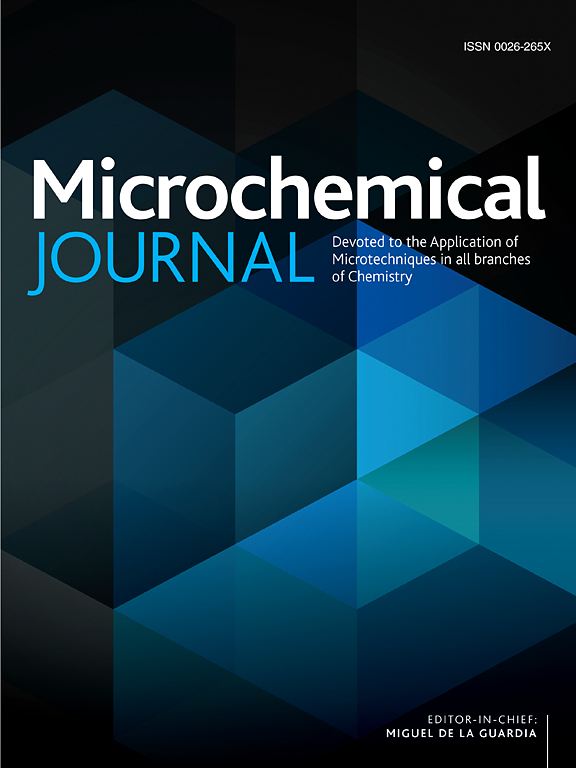Microfluidic paper-based analytical devices and miniaturized systems to detect sugar adulteration in honey: A mini-review
IF 4.9
2区 化学
Q1 CHEMISTRY, ANALYTICAL
引用次数: 0
Abstract
Honey is a natural sweetener widely used in food products and as a daily dietary ingredient, providing a valuable source of carbohydrates, energy, and medicinal properties. However, the increasing demand for honey has led to its adulteration with various sugar syrups. Ensuring honey authentication is crucial for maintaining consumer confidence and for developing sensitive, accurate, rapid, and cost-effective methods for the frequent and convenient detection of adulterants. Microfluidic paper-based analytical devices (µPADs) and miniaturized detection systems not only fulfill these requirements but also offer advantages such as simplicity, portability, minimal use of reagents and materials, and accessibility compared to traditional methods. These tools facilitate rapid, on-site analysis, thereby obviating the need for costly laboratory techniques such as high-performance liquid chromatography or gas chromatography. This article reviews and summarizes recent advancements in the detection of sugar adulteration in honey using µPADs and miniaturized detection systems. The future prospects of these tools are discussed, as they are expected to become more accurate, adaptable, and applicable across various domains.

求助全文
约1分钟内获得全文
求助全文
来源期刊

Microchemical Journal
化学-分析化学
CiteScore
8.70
自引率
8.30%
发文量
1131
审稿时长
1.9 months
期刊介绍:
The Microchemical Journal is a peer reviewed journal devoted to all aspects and phases of analytical chemistry and chemical analysis. The Microchemical Journal publishes articles which are at the forefront of modern analytical chemistry and cover innovations in the techniques to the finest possible limits. This includes fundamental aspects, instrumentation, new developments, innovative and novel methods and applications including environmental and clinical field.
Traditional classical analytical methods such as spectrophotometry and titrimetry as well as established instrumentation methods such as flame and graphite furnace atomic absorption spectrometry, gas chromatography, and modified glassy or carbon electrode electrochemical methods will be considered, provided they show significant improvements and novelty compared to the established methods.
 求助内容:
求助内容: 应助结果提醒方式:
应助结果提醒方式:


